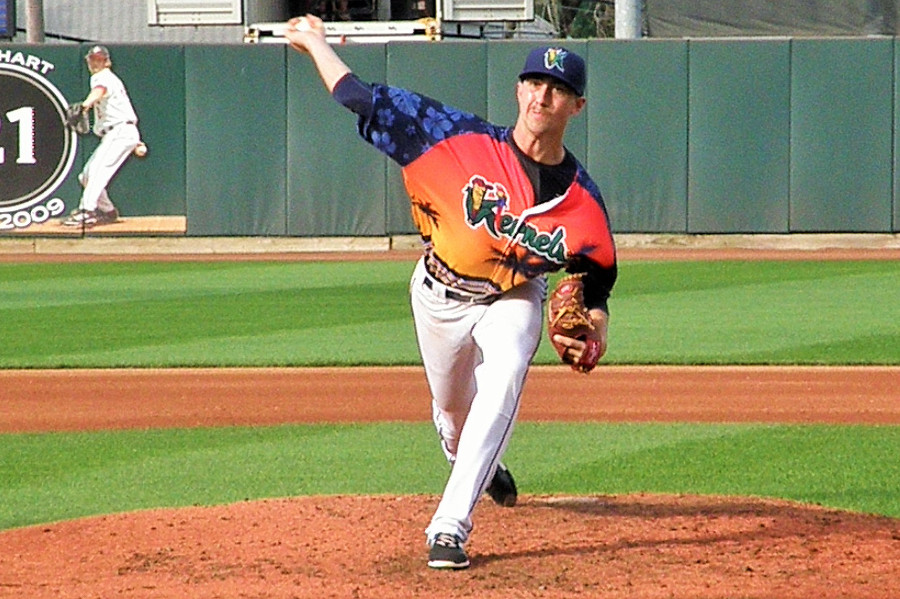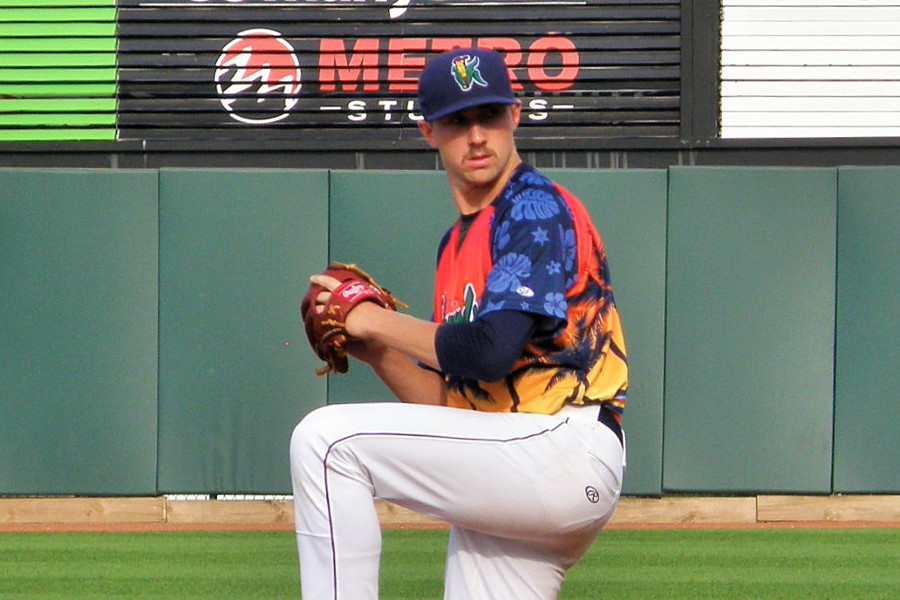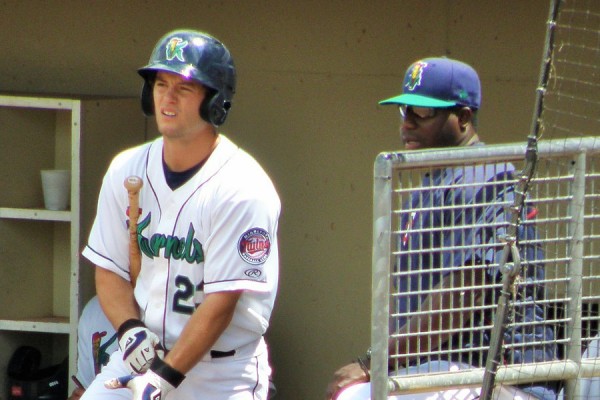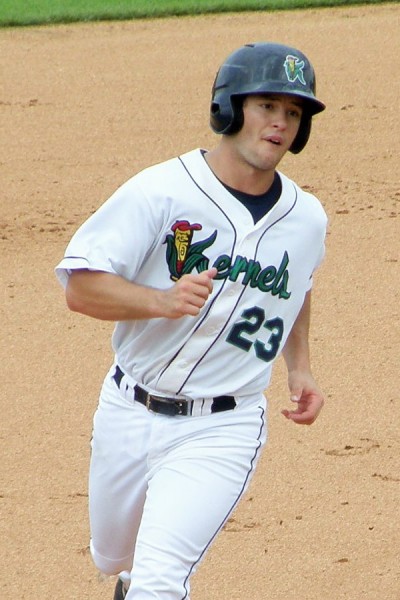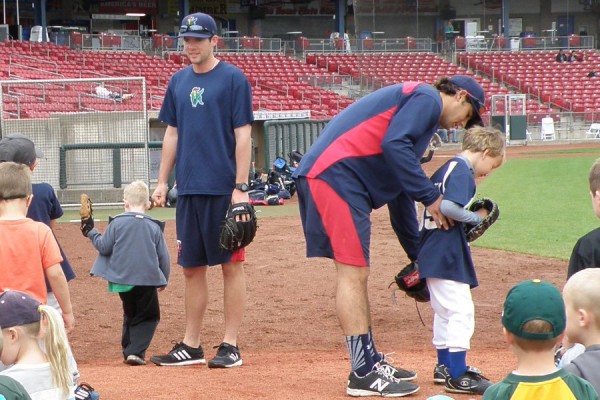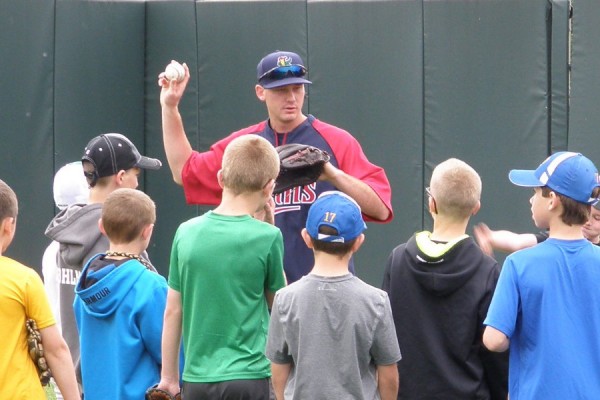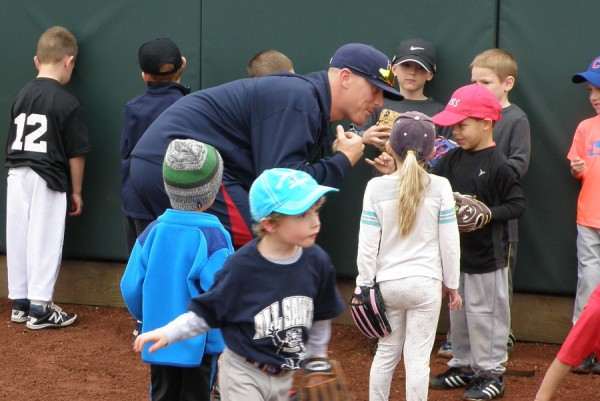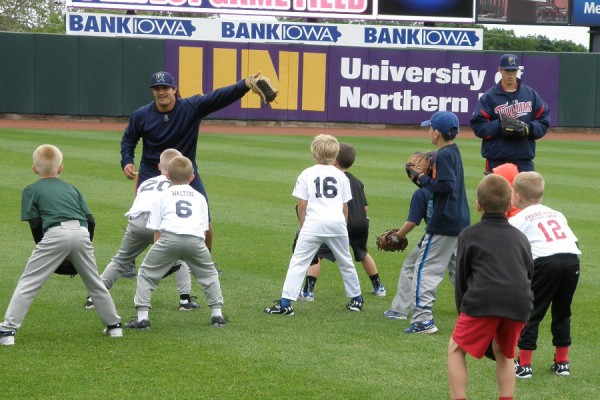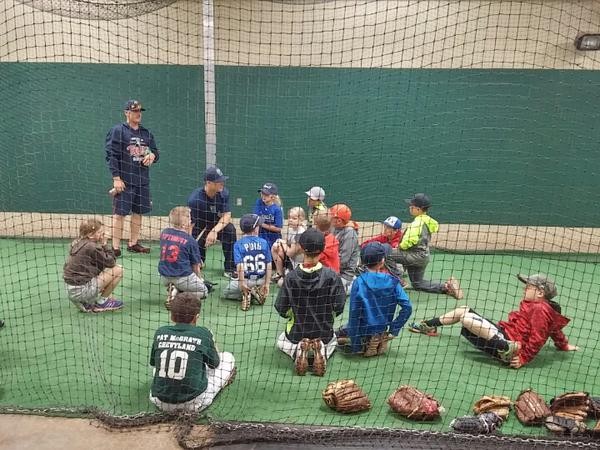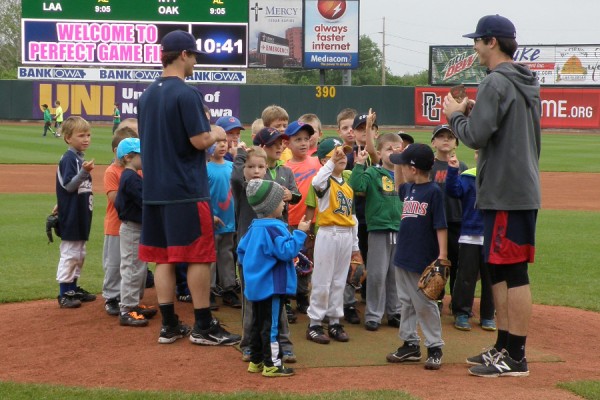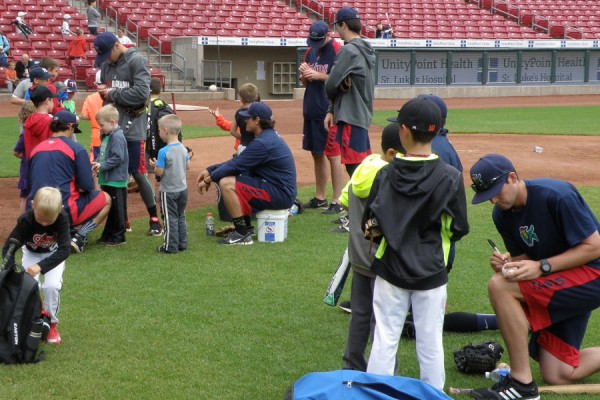Every minor leaguer’s goal entering the season is to develop his game to the point where he earns a promotion to the next higher level in the system.
Sometimes, that call comes when a player has dominated play within their league. Other times, circumstances align to create an opportunity for players to move up the organizational ladder, at least temporarily.
Such circumstances allowed Cedar Rapids Kernels third baseman TJ White and catcher/first baseman Brett Doe to spend a few weeks each in the middle of this summer wearing the uniform of the Fort Myers Miracle, the Minnesota Twins’ Class high-A affiliate, one level above the Class A Kernels.
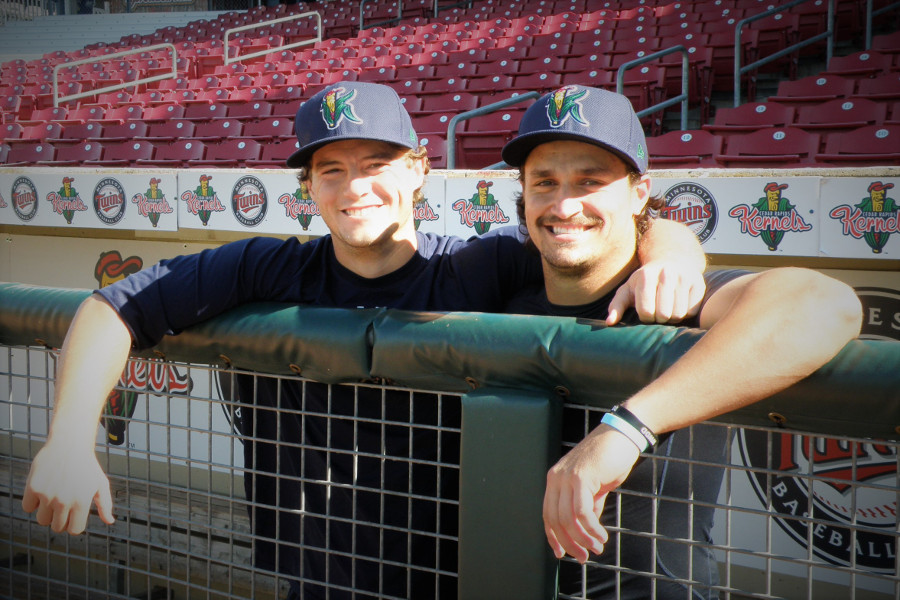
White and Doe both got their promotion opportunities in part due to some misfortune of others, as the Miracle began to rack up injuries among their early-season regulars at the corner infield positions. Both players had been holding their own in the Midwest League when their calls came, but both were also aware that their stays in Fort Myers might be short-lived.
“Yeah, Jake pretty much let us know,” White recalled last week. “He said it could be four to five days, it could be two weeks or it could be the whole the season. So we were looking to just go play and have fun with it.”
For Doe, who wasn’t on the Kernels’ original roster out of spring training, it wasn’t the first time this season that he’s lived with uncertainty concerning how long he’d be on a roster.
“That’s kind of what I came up here (to Cedar Rapids) with, when (Jorge) Fernandez got hurt,” Doe recounted. “Once I got up here, it took me about a month and a half to unpack my bag, to actually unpack everything. So when I got there (to Fort Myers), I didn’t unpack.”
At least players in a situation like what Doe and White found themselves in don’t have to try to find a short-term place to live during their time with the Miracle. Fort Myers doesn’t have a host family program similar to what exists in Cedar Rapids, but they do have an on-site Players Academy with dormitory-like housing.

“We both stayed at the Academy,” confirmed White. “They set it up pretty much that way. We could have found a place to live, but with our situation, the Academy was a lot easier for us.
“It’s nice. They’ve got the pool tables and ping-pong tables and everything. And they feed us, so it’s not bad.”
The food and lodging might be nice, but maybe the biggest benefit to having even a temporary promotion to the next higher level of minor league ball is the exposure the players got to the Class high-A game. Both Doe and White noticed significant differences in the quality of the game played in the Florida State League.
“For me, we see the same velocity and stuff like that up there, but guys have a plan to get you out and they can execute that plan a little bit better,” observed Doe. “They didn’t miss as many spots – not saying guys here miss spots, but you just didn’t get as many pitches to hit. When you’re up there, I felt like, you can’t miss that pitch. If you get a pitch to hit, you can’t miss it.”
“We kind of talked about it jokingly, because guys can locate their off-speed (pitches) so much more, which makes it so much more dangerous,” White agreed. “You might not see a fastball again after that first pitch, because they can control it so much better. Here, you’ll probably most likely get another fastball or two before the end of the at-bat.”
Doe, who is attempting to learn the catching trade this season, after primarily being an infielder at the college level, didn’t get much time behind the plate in Fort Myers. But he’s not complaining.

“I was first base, every game,” he said. “I worked with the bullpen, to stay sharp for me, catching. But once the game rolled around, I was at first base pretty much every day, which was nice. I went from being a third string catcher here (in Cedar Rapids) at the beginning of the year to playing first base every day at high-A.”
The experience did cement one thing in to the minds of both players. They want to earn spots on the Fort Myers roster full time next season and getting some time there this year gives them some idea what they need to do to make that happen.
“For next year, yeah I think it did,” White confirmed. “Just showed us a little bit, gave us a little taste of it and hopefully, we’ll both be starting there next year. I think that’s our plan. But just seeing the pitchers and a little bigger ballpark, so we kind of know how to approach that, as well.”
“That and then just us playing, what is it today, 122 games?” added Doe. “We’ve learned a lot from that, too. We’ve learned a lot in our first full season – how to get through and be ready for next season.”
Enduring the number of games in a full minor league season is no small factor for a player’s development, as White pointed out.
“Last year, me and Brett both only played about 15 games, I think, all season. So this year we’re grinding through, but it’s gone well so far.
On the subject of “grinding through,” the Kernels clinched their playoff spot in June by finishing second in the MWL’s Western Division during the first half of the season. The two players talked some about whether that’s made it harder or easier to maintain focus, as a team, in the season’s final few weeks.
“I think as far as preparation, it can be tempting for us to sit back, as a team, and kind of be like, ‘we’re in the playoffs,’” conceded Doe. “But once the lights come on and the game starts, no one is thinking, ‘we’re in the playoffs so we don’t have to play hard.’”
Doe, White and their Kernels team mates are already getting the message from their manager, Jake Mauer, that now is not the time to ease up on the throttle.
“Jake kind of told us, ‘hey, we want to finish strong. All these games are going to be close.’ He said they’re going to be close ballgames and we want to be hot rolling into playoffs, not kind of stumbling in getting started.”
While both Doe and White would obviously prefer to have finished out their 2015 season in Fort Myers, returning to Cedar Rapids does bring with it one benefit. While the Kernels are preparing for postseason play, the Miracle are on the verge of elimination from playoff contention.
So, while those on the Miracle roster will likely be playing their final game of the season on September 6, Doe and White will be with the Kernels as they begin their quest for MWL championship rings on September 8.



